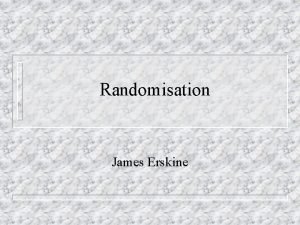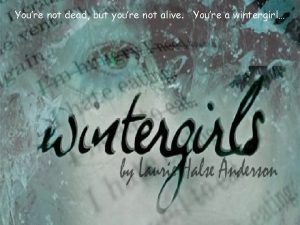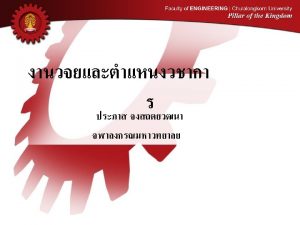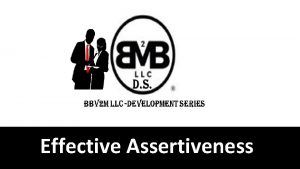You may think you know what youre dealing












- Slides: 12

“You may think you know what you’re dealing with, but believe me, you don’t. ” – Noah Cross (John Huston) to Jake Gittes (Jack Nicholson) in Roman Polanksi’s Chinatown (1974) FILM NOIR “Black Film”

FILM NOIR • A term coined by French film critics (first by Nino Frank in 1946) who noticed the trend of how dark, downbeat and black the looks and themes of many American crime and detective films released in France following WWII were. • Although the term became widely used after 1946, the first noirs were before that.

FILM NOIR • Content is focused on crime or some crime about to be committed • In early noir, characters were criminals and gangsters • As noir progressed, the focus shifted to regular people caught up in criminal plots OR women of questionable virtue who plot to kill with the help of a clueless man : Double Indemnity; The Postman Always Rings Twice; Gilda; The Killers

FILM NOIR • Also focused on detectives on the fringe of the law: The Maltese Falcon; Murder, My Sweet; Laura; Kiss Me Deadly

FILM NOIR STORYLINE CHARACTERISTICS OF FILM NOIR: • Non linear, twisting narrative • Convoluted, maze-like plots • Flashbacks • Witty, razor sharp, acerbic dialogue • Reflective and confessional • First person, voiceover narration

FILM NOIR VISUAL CHARACTERISTICS OF FILM NOIR • Claustrophobic framing devices (doors, windows, ceilings) • Mirrors are prominent (reflections of dark side or duality of human nature) • Extreme high angle shots to show “helpless” victims • Low key lighting

VISUAL CHARACTERISTICS OF FILM NOIR • Disorienting visual schemes • Ominous shadows • Skewed, bizarre camera angles • Unbalanced screen composition

PROTAGONISTS OF FILM NOIR • Cynical, obsessive, sarcastic • Disillusioned, frightened and insecure loners • Struggling to survive • Often detectives or con men

ANTAGONISTS OF FILM NOIR “Femme Fatale” CHARACTERISTICS: • Beautiful, promiscuous, double-dealing, seductive • Questionable values • Betrays, manipulates or double crosses the hero

SETTINGS OF FILM NOIR • • Interiors with low-key lighting Venetian-blinded windows and rooms Dark, claustrophobic Exteriors were often urban night scenes • Wet asphalt • Dark alleyways • Foggy scenes near water

FILM NOIR “CLASSIC” Film Noirs: Double Indemnity (1944), dir. Billy Wilder The Big Sleep (1946), dir. Howard Hawks Kiss Me Deadly (1955), dir. Robert Aldrich The Third Man (1950), dir. Sir Carol Reed The Maltese Falcon (1941), dir. John Huston Touch of Evil (1958), dir. Orson Welles

FILM NOIR “REVISIONIST” (modern) Film Noirs: Chinatown (1974), dir. Roman Polanski Body Heat (1981), dir. Lawrence Kasdan Pulp Fiction (1994), dir. Quentin Tarantino The Usual Suspects (1995), dir. Bryan Singer L. A. Confidential (1997), dir. Curtis Hanson
 I dont know where youre going
I dont know where youre going Do asexuals have sex
Do asexuals have sex Dhirubhaism
Dhirubhaism Fun facts about minecraft
Fun facts about minecraft I know him better
I know him better You may think it's bad to forget your homework
You may think it's bad to forget your homework Email topics
Email topics What to do when you're angry
What to do when you're angry Good afternoon hope you are doing well
Good afternoon hope you are doing well Jesus you're my firm foundation
Jesus you're my firm foundation Random compliment generator
Random compliment generator Youre my king
Youre my king If love is the answer you are wrong
If love is the answer you are wrong























